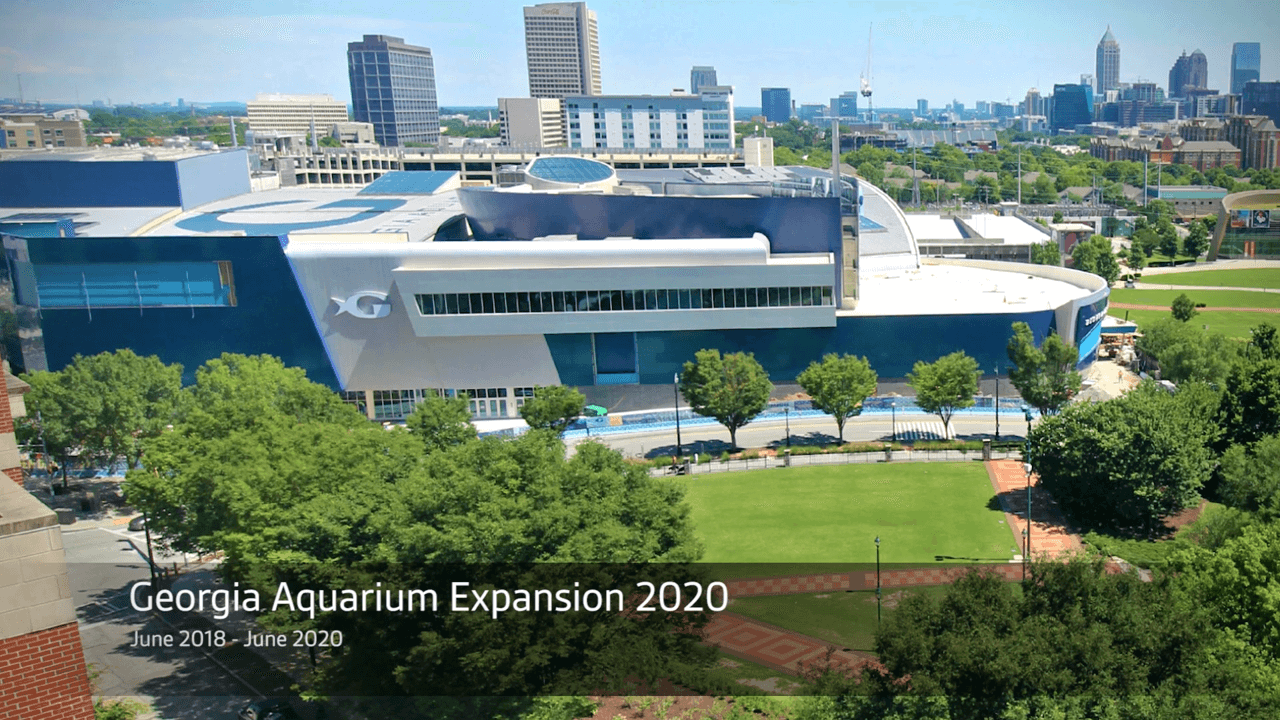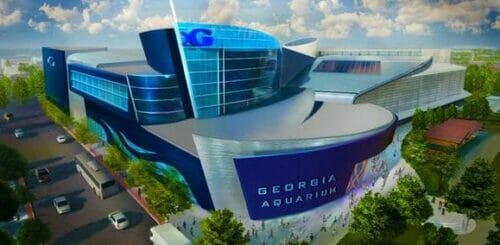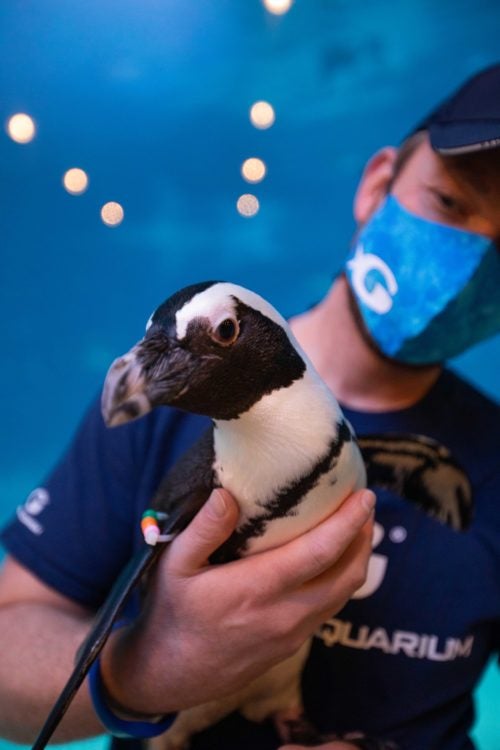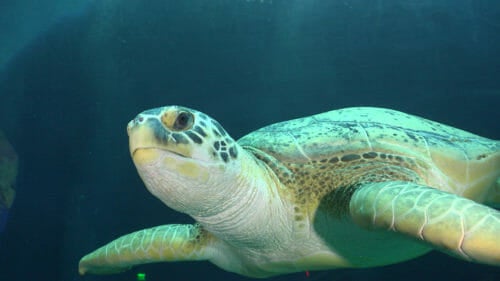Never Stop Making The World A Better Place
Georgia Aquarium is proud to announce we have been granted LEED certification for our most recent expansion, including the gallery Sharks! Predators of the Deep!
Throughout the expansion process at the Georgia Aquarium, sustainability has been at the forefront of design and construction. The project established certification through the U.S. Green Building Council’s (USGBC) LEED™ green building rating which is a globally recognized symbol of sustainability achievement and leadership.
The Aquarium’s Expansion strived to minimize site disturbance through a host of strategies. Located in the heart of downtown Atlanta, visitors have access to nearby restaurants, museums, parks, entertainment, and many other nearby services. Visitors can take advantage of public transit by utilizing the nearby light rail or one of the many bus lines (totaling over 200 weekday trips and 252 weekend trips) rather than relying on personal vehicles. The Aquarium also offers bicycle parking and storage to promote healthy living and lessen the dependence on vehicles. There is covered parking for about 85% of the spaces, in effort to prevent the impacts of Heat Island Effect. Heat Island Effect occurs when land becomes hotter than the land around it, due to human activity and dark color surfaces that absorb the sun’s heat. To reduce the heat island effect, the Aquarium installed a white colored “cool roof” and light grey colored concrete.
Many measures were taken to improve the air quality and wellbeing of all occupants and sea life in the new Expansion. Optimal ventilation, efficient filtration systems equipped with MERV 13 filters and Carbon Dioxide monitoring to ensure healthy indoor air was prioritized in the design of mechanical systems. You will also see 10’ walk-off mats at all entryways to limit debris from being tracked into the building. During construction strict practices to minimize dust, debris, and moisture from being trapped inside the building were required. This improved air quality during construction and will continue to provide long-term health benefits to occupants in the Aquarium. The Aquarium is committed to providing visitors with clean, fresh air and has implemented a no smoking policy in and around the building.
According to the U. S. Energy Information Administration (EIA), Commercial and Industrial sectors consume almost 50% of all U.S. energy produced. Much of this energy is wasted due to inefficiencies and human behavior. The Aquarium Expansion is saving 451,034 kWh of energy annually—a 9% reduction in energy use from a baseline building. These energy savings are equivalent to saving 703,052 pounds of Carbon emissions which could be used to power 54 homes use for one year. The building was designed with a well-insulated envelope and minimal windows to promote thermal comfort. Incorporating LED lighting into the project was not only essential to achieve energy savings, but also necessary to provide lighting levels that illuminate the featured sea life while not disturbing their natural habitat.







